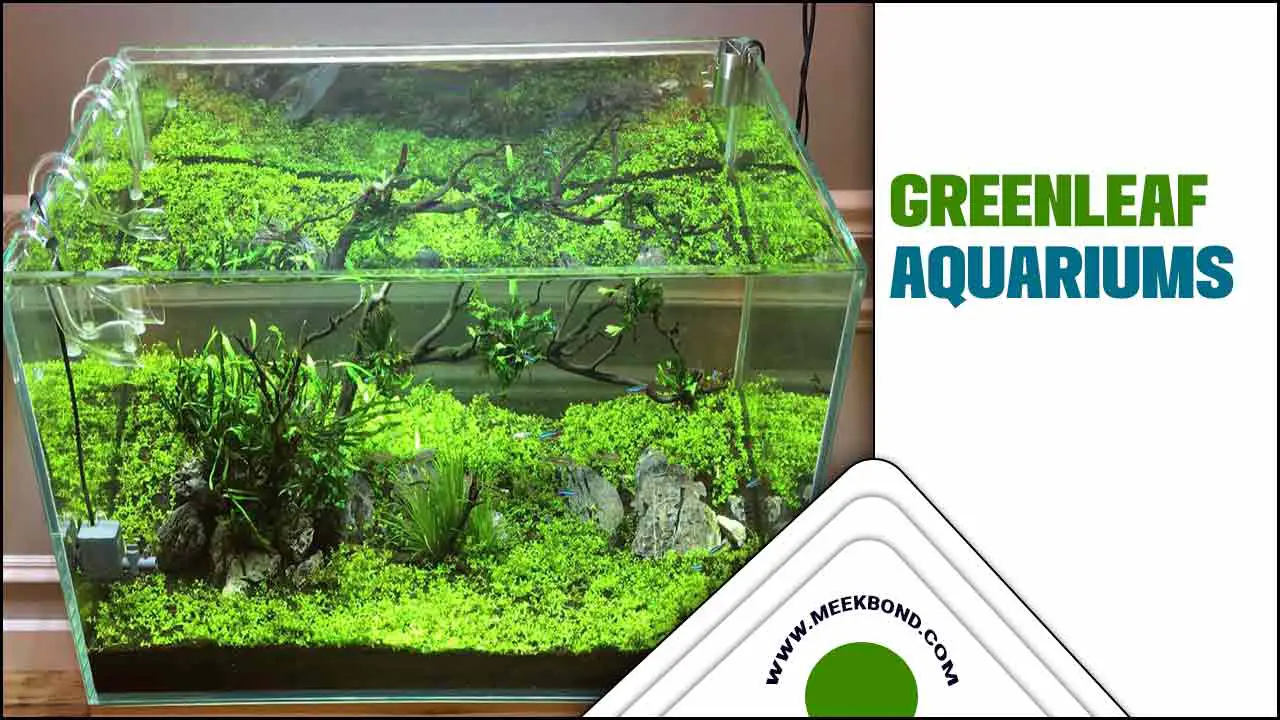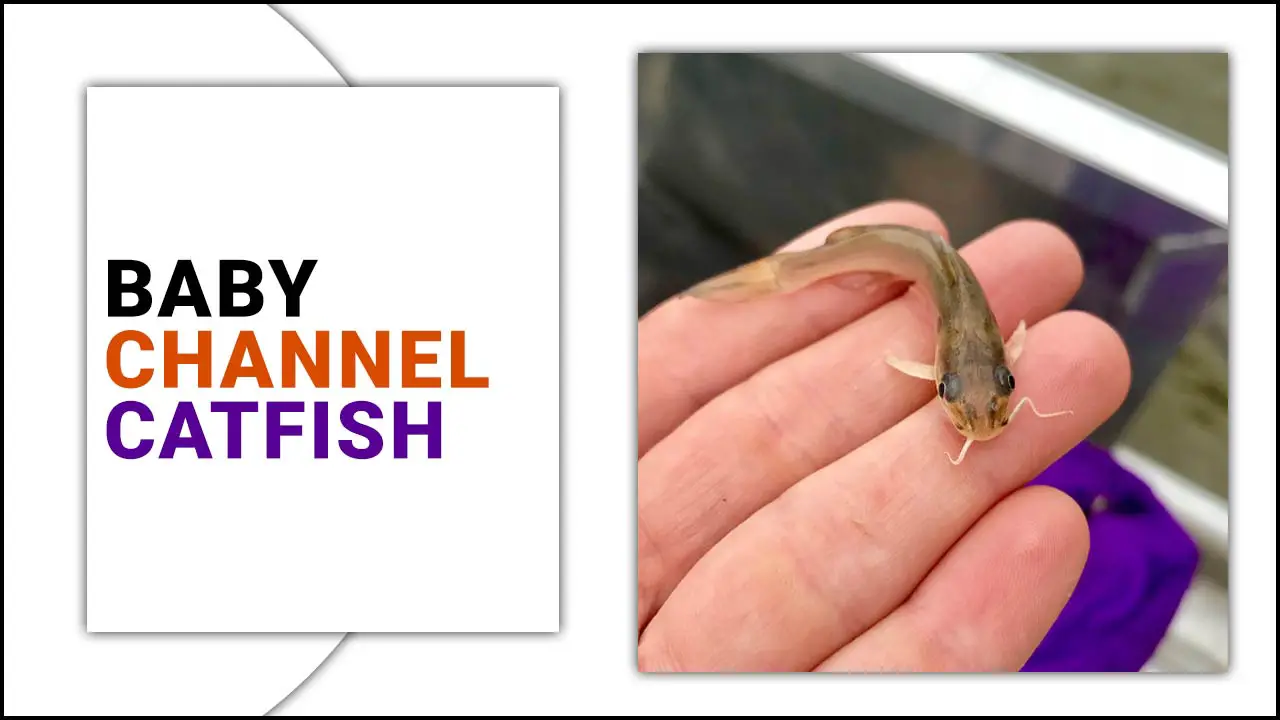As the popularity of aquatic pets continues to grow, many people are turning to Amano shrimp as an addition to their tanks. These fascinating creatures are peaceful, easy to care for, and can be a great addition to any tank. However, like any living creature, they require proper care and attention to thrive.
We will explore the basics of how to care for newborn amano shrimp. From setting up their environment to providing the right food and water conditions, we will discuss everything you need to know to ensure your Amano shrimp thrive in their new home.
Whether you are a seasoned aquarium owner or a beginner looking to add some new aquatic life to your tank, this post will provide valuable information that will help you care for your Amano shrimp. So, let’s dive in and learn how to care for these
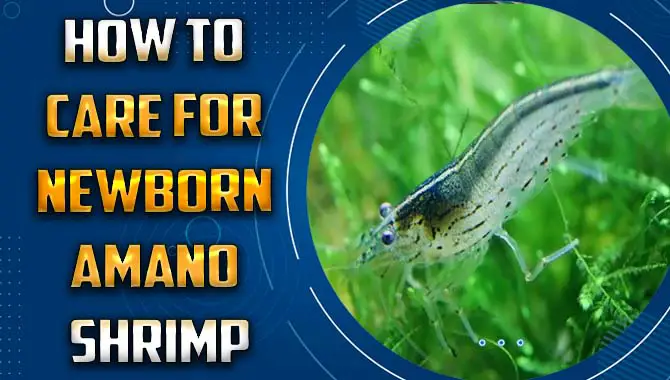
Expert Tips On How To Care For Newborn Amano Shrimp
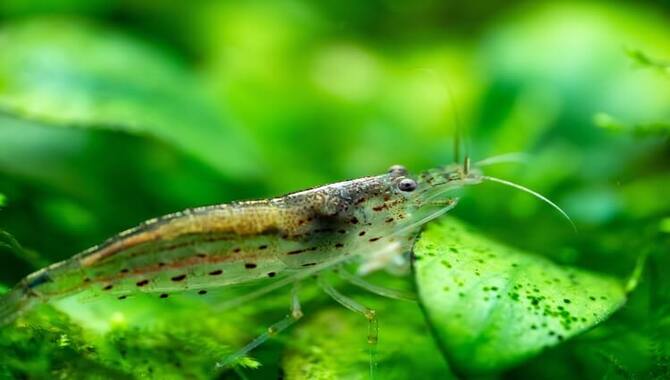
Caring for newborn Amano shrimp can be challenging, but with the proper knowledge and expertise, it can be a rewarding experience. Following these expert tips, you can provide your newborn Amano shrimp with a healthy and safe environment to thrive. Here are some expert tips to help you care for your newborn Amano shrimp:
1. Provide a suitable environment: Newborn Amano shrimp require a specific environment that provides ample space, clean water, and plenty of hiding places. Before adding the shrimp, ensure that you cycle the tank correctly.
2. Feed them appropriately: Newborn Amano shrimp need a protein-rich diet to encourage healthy growth. Feed them small amounts of high-quality food multiple times throughout the day.
3. Monitor their behaviour: Regularly observe your newborn Amano shrimp to ensure they are healthy and active. Look for signs of stress or illness, such as lethargy, discolouration or unusual behaviour.
4. Keep the water clean: Regularly check and maintain proper water parameters to prevent harmful toxins from building up in the tank.
Water parameters of salty water should be maintained between 10-12 pH. Still, freshwater water can be used if treated with aquarium salt or freshwater aquarium salt mix.
Things To Keep In Mind While Caring For Amano Shrimp
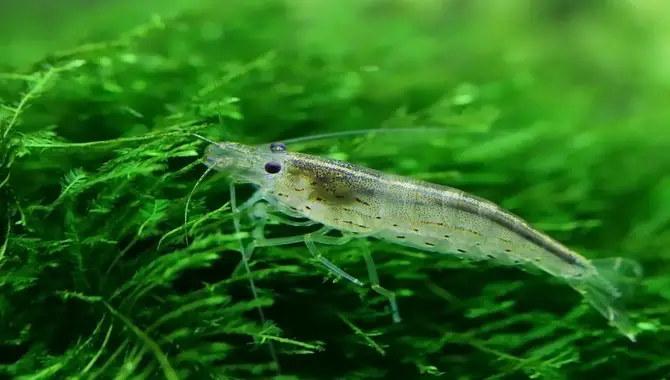
Amano shrimp are famous among aquarium enthusiasts for their peaceful nature and ability to help keep tanks clean. However, it is essential to remember a few things when caring for these delicate creatures. First, ensure that the water parameters in your tank are suitable for Amano shrimp, including a pH level between 6.5-7.5 and a temperature of around 75°F. Additionally, provide plenty of hiding places and plants for them to feel safe and secure in their environment.
When feeding your Amano shrimp, consider giving them various foods such as algae wafers, blanched vegetables, and small pieces of protein like fish or shrimp pellets. Overfeeding can lead to poor water quality and health issues for the shrimp, so be mindful of portion sizes.
Lastly, constantly monitor the behaviour and health of your Amano shrimp closely. Look for signs of stress or illness, such as lethargy, discolouration or abnormal behaviour. Your Amano shrimp can thrive in their aquarium home with proper care and attention.
A Summary Of Caring For Newborn Amano Shrimp
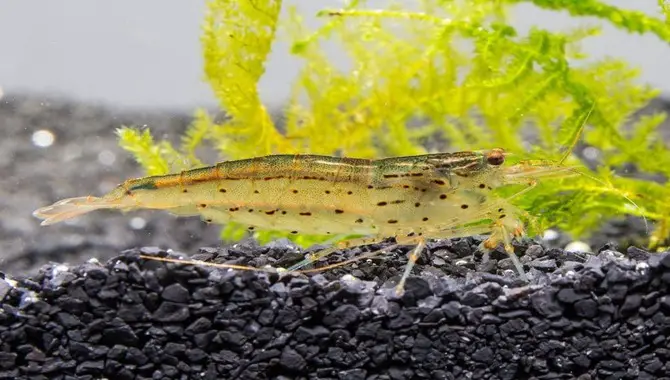
Amano shrimp (Bathonina amano) are freshwater shrimp that are popular in the aquarium hobby. They are known for their bright colours and easy care. However, breeding them is not as straightforward as producing other freshwater species due to the need for brackish water (slightly saltier water) for the larvae. The female shrimp will carry the fertilized eggs for around six weeks before hatching. After hatching, larvae require brackish water to survive and must have fresh water changed regularly.
Caring for Amano shrimp during breeding involves providing them with an appropriate diet (e.g., algae and brackish water invertebrates), suitable habitat (e.g., aquarium filter or tank with filter), and general care (e.g., feeding shrimp food). After hatching, Amano shrimp larvae must be monitored for water quality parameters (e.g., salinity, conductivity) and provided with enough oxygen. Although amano shrimp are usually very hardy, providing them with appropriate care is essential to ensure they thrive and reproduce successfully in aquariums.
What Needs To Be Done When Housing Newborn Amano Shrimp
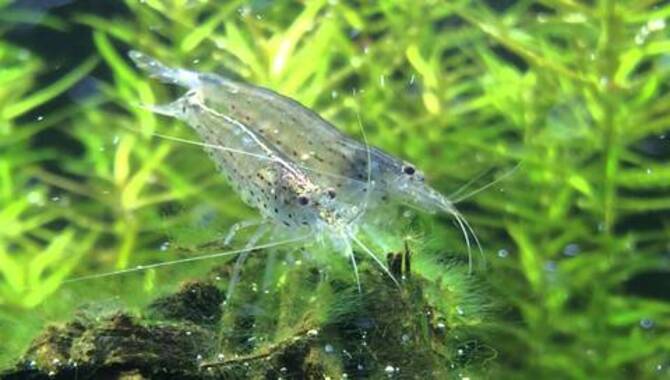
Providing the correct water quality and parameters is essential when caring for newborn Amano shrimp. The female shrimp should be housed in a tank filled with water similar to freshwater aquarium water (about aquarium salt level) but with added aquarium salt, betta fries food, and aquarium algae.
This will replicate the water parameters of the female shrimp’s natural habitats. Use a filter to provide aeration, and ensure the tank is well-oxygenated. As the female shrimp carries the eggs, monitoring her parameters closely and ensuring she is healthy is vital.
Keep the female shrimp happy and healthy by feeding her daily with brine or hatchling brine shrimp. Keep feeding size to one inch until she begins to hatch the eggs. After hatching, feed twice daily with hatchling food or frozen food. In addition to providing water quality and parameters, care for newborn Amano shrimp includes feeding and breeding them properly.
What To Do If Amano Shrimp Get Sick
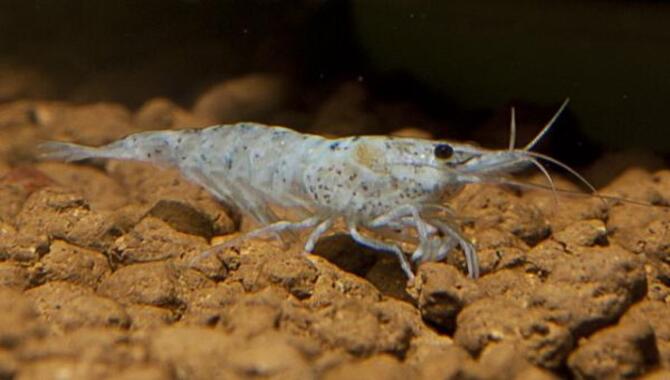
If an Amano shrimp is sick, an aquarium professional should quarantine it from the rest of the tank and prescribe medication for treatment. Additionally, feeding the shrimp a balanced diet of proteins and plant matter will help keep it healthy and vibrant.
Also, ensuring the water filtration system properly working order will help keep water qu high and algae at bay. Finally, ensure not to overcrowd the aquarium and provide enough food for the shrimp to eat but not too much to avoid infection or disease.
Benefits Of Caring For Amano Shrimp
Caring for Amano shrimp can have numerous benefits for aquarium enthusiasts. These shrimp are known for their ability to help keep tanks clean by consuming algae and other debris, which can help to maintain a healthy and balanced ecosystem. Additionally, Amano shrimp are peaceful creatures that can coexist with various fish and invertebrates without causing any harm.
They are also relatively easy to care for, making them an excellent choice for experienced and novice aquarists. Finally, watching these little creatures scuttle around the tank can be incredibly entertaining and relaxing, providing enjoyment and stress relief for their owners. Caring for Amano shrimp can provide numerous benefits, making it a worthwhile investment for aquarium enthusiasts.
What Should Be Done When Caring For Amano Shrimp?
A saltwater tank is necessary for caring for newborn Amano shrimp, as they cannot survive in freshwater for long. You should also keep a 2-3 inches water depth in the tank and ensure the water is clean and clear.
In freshwater aquariums, you can use marine salt to give the shrimp the necessary minerals. Alternatively, you can feed phytoplankton to them. However, providing them with fish food is not recommended at this stage as the feeding habits of shrimp have not yet been confirmed. If you don’t want to keep the eggs, you can let don’t fall into the aquarium and use them as food for other shrimp and fish.
Should Amano Shrimp Be Kept With Other Aquatic Creatures?
Amano shrimp are beautiful freshwater aquarium fish that are easy to care for. However, they require specific water conditions to live happily in an aquarium.
Amano shrimp hatchlings require brackish water to survive and hatch successfully. The water salinity level should be between 1.0 and 3.0, similar to the seawater salinity level of 31-33’N (medium salinity) or 32-34’N (hig31-33’Nity). The water should be should32-34’Nt clean and free from ammonia and nitrates.
Besides, feeding the shrimp with liquid food supplements is essential to keep them healthy and active. So, even if the shrimp seems content with the food provided in the aquarium water, you should not skip feeding time.
What Temperature Should My Aquarium Be At When Caring For Newborn Amano Shrimp?
When caring for newborn Amano shrimp, the water’s temperature should be in the 2.5-gallon or 5-10 litres
rangwater’s°F of 80°F (21.1°C to 26.6°C) to ensure they remain healthy and develop properly. The water’s parameters, such as pH level and water quality, should be stable and suitable for shrimp development.
Amano shrimp prefer water that is between 65°F and 78°F (18.3°C and 25.6°C) as this is their average water temperature. It is essential to regularly check the water temperature to ensure it stays within the desired range of 72°F to 78°F (22.2°C to 25.6°C). The tank should not exceed 80°F (26.6°C) as this may cause harm to shrimp.
Conclusion
Newborn shrimp are delicate shrimp that need care and attention from their aquarium owners. Providing these shrimp with iIt’s tank water parameters and a constant supply of algae-based food is vital. To ensure a healthy shrimp population, it is crucial to change 90% of the water parameters in the Care For Newborn Amano Shrimp aquarium tank water every week.
Newborn shrimp are adorable and require much care, especially in the aquarium. If you learn to care for freshwater shrimp like these, your tank will be full of shrimp larvae, and they’ll bring joy to your freshwater aqua they’ll hopefully, this will give you an idea of what freshwater shrimp is like and helps you care for them. We’ve discussed how to care for newborn amano shrimp. So now you have read all the tips and must-dos to care for newborn shrimp. Make sure you follow them and enjoy shrimp aquarium care.
Frequently Asked Questions
What Do You Feed Baby Amano Shrimp?
Some food sources that baby Amano shrimp can feed on after hatching include algae, bloodworms, and other small, nutritious foods. Hobbyists should prepare to feed the baby shrimp with food sources such as these to ensure their survival.
How Do You Keep Baby Amano Shrimp Alive?
Keeping baby Amano shrimp alive requires a lot of care. Here’s what you need to know:
Amano shrimpers take around five weeks to hatch, and the pregnant shrimp must have a steady oxygen supply.
The larvae of Amano shrimp are delicate and require special care. They must be kept in fresh, salt-free water and with a stable oxygen level.
To breed Amano shrimp in captivity, the eggs must be placed in a saltwater tank before returning to a freshwater tank.
Can Amano Shrimp Babies Survive In Freshwater?
Amano shrimp babies require saltwater to develop correctly, but they can lay eggs in freshwater. The larvae that hatch from the eggs are delicate and require special care (for example, they must spend a period in salty water before migrating to freshwater), which means that you may need to provide freshwater shrimp tanks for breeding purposes.
How Long Does It Take For Amano Shrimp To Give Birth?
When it comes to Amano shrimp, typically, it takes them 5-7 weeks to carry their eggs before they hatch. The eggs will hatch within a day of fertilization, and the larvae will grow into juvenile shrimp within 5-6 months. Adult shrimp typically reach maturity within 2-5 years and can live up to 5-10 years.
What Is The Best Way To Take Care Of A Pregnant Amano Shrimp?
Caring for a pregnant Amano shrimp is not tricky but requires some attention. Provide your shrimp with a clean, well-maintained tank with adequate oxygen levels and plenty of hiding spots. Constantly monitor her and transfer her to another tank when she is close to dropping her eggs.
Breeding Amano shrimp is complex and involves replicating specific conditions, such as salty water, for the larvae to migrate back to freshwater. Female Amano shrimp carry their eggs for approximately five weeks and fan them with their swimmerets for oxygen.

Aquarium passion is all about connecting with the aquatic life and providing education to the public on the importance of these creatures. We showcase a wide variety of marine life through our exhibits as well as working with schools to provide unique learning opportunities for students of all ages.



